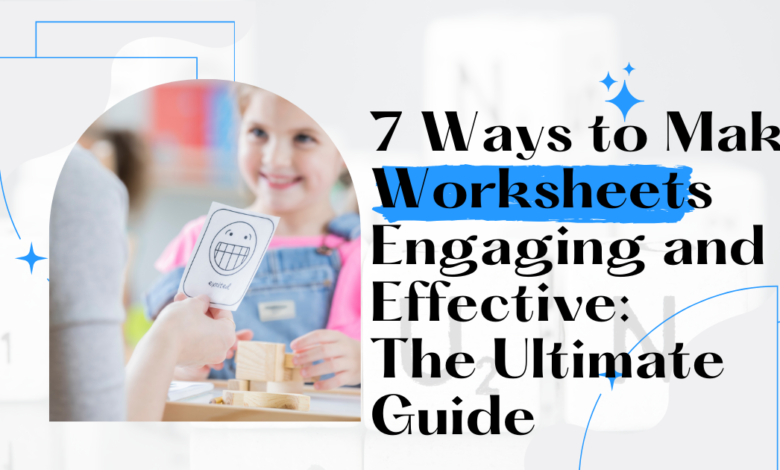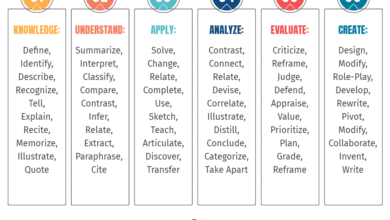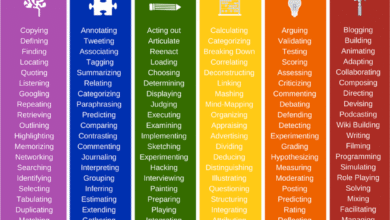The Ultimate Guide to Making Worksheets Engaging and Effective

Hello there, fellow knowledge-seekers! You’re about to read a transcript that’s been generated by the AI in Adobe Premiere Pro and then me. Spot a mistake in this transcript? Help this teacher out and shoot an email to vicki at coolcatteacher dot com.
Transcript
Vicki Davis (00:01)
I’m so excited to be talking to my friend Linda Kardamis. She taught middle school math before creating Teach for the Heart, which provides practical solutions and biblical encouragement for Christian today we’re going to talk about a really important.
topic and that is, you know, a lot of us use this word almost like a cuss word, worksheet. And you know, I have called people worksheet wonders where all they did was worksheets. But today we’re going to talk about some ways to truly turn worksheets into transformational teaching. So thanks for coming on the show, Linda. So are worksheets redeemable? Can we turn them into something?
Linda Kardamis (00:54)
Yeah, thank you so much for having me.
Vicki Davis (01:00)
Great.
Linda Kardamis (01:01)
Yeah, my goal with this is to talk about ways to take an existing worksheet and turn it very quickly into an activity that’s more engaging. So kind of my criteria when it’s putting this together is something that’s not going to take the teacher a lot of time, not going to take it, like, so this is not a super creative, amazing activity. This is just, I don’t have a ton of time, but I have a worksheet, I’d rather, you know, give them something a little bit more engaging than just handing them a worksheet. And my encouragement, if you’re kind of new to this, if you’re like, I do all worksheets, don’t feel like you have to transform everything.
on all at once, maybe pick one or two of these ideas, start incorporating them, and then over time, you can switch over more and more. So that’s my encouragement.
Vicki Davis (01:40)
Okay, so give us one of your ways.
Linda Kardamis (01:43)
Okay, so, and by the way, a lot of these are not original, they’re kind of just compiled, but the first is reciprocal learning. So here’s how it works. Students work in pairs, and you can actually literally take an existing worksheet and just use a worksheet, and all you have to do is split it into two sections, okay? You can do like left-hand, right-hand, or odds and evens, and students work in pairs, and they take turns coaching each other. So each student has their own sets that they’re supposed to do.
and their partner has the answers, okay? So let’s say you have like odds and evens. So one student has all the odd answers, one student has all the even answers. And what they do is they take turns coaching each other. So the first one up, I have the answer, my partner does not, they’re supposed to do the problem, and if they need help, I’m supposed to coach them. So there’s all kinds of opportunities then to teach students how to coach someone in the answer. This obviously is going to work really well with something like math.
or science where there’s more to the answer. So you’re not just giving them the answer or something, you’re kind of coaching them to get to the answer. And they just take turns going back and forth as they go through that activity.
Vicki Davis (02:46)
I love that. And you know, if you want to learn it, teach it. And so the requirement to be able to teach something. So I’m guessing when a group gets stuck, do you help the student who’s stuck? Or do you help the teacher slash coach so they can turn around and teach the student?
Linda Kardamis (03:01)
Yeah, I mean, that’s a great question. I mean, you can kind of use your discretion, but I would kind of take that as an opportunity to teach both, right? Like, okay, this is the kind of question you can ask. Well, let’s look like, why don’t you grab your notes and say, what’s the first step? You know, so you can kind of like help. Yeah, you’re right. Help the coach know how to coach at the same time you’re helping, helping both. So.
Vicki Davis (03:07)
Uh huh.
Uh-huh. Yeah, so we don’t give them the answers either. That’s fantastic. Okay.
So what’s your second way?
Linda Kardamis (03:23)
So the second one is called Showdown, and this actually comes from Kagan Cooperative Learnings. So in this activity, students review or practice problems in groups of three or four. Okay, so one student is the showdown captain, and they read a question, and all the students write down the answer on either, it could just be a piece of paper, or I mean, it could be like those personal whiteboards or a tablet.
But they can’t see so like everyone writes down the answer privately and then the captain says showdown and everyone kind of puts their Answer down on the desk and they all look at the answer and say do we agree do we disagree? And so then they can discuss if they’re all like yep We all got it right or like no I think this is the answer and this is why then they can have a brief conversation And then it turns the next person gets it and is now the showdown captain and so just rotates around that way So once again, you’re not really needing much more like I don’t see you can just literally use the worksheet You don’t even have to give anyone the answers
but it’s a much more engaging way to use it.
Vicki Davis (04:20)
Oh fun, so it’s kind of like a game that you can pull out of the hat anytime. I love that.
Linda Kardamis (04:23)
Yes. Yep. Really easy. And one little thing here real quick with these is I would recommend any of these that you want to use, you can use repetitively. And so your students can get used to this pattern, right? So they’re like, oh, the first time you do it, it might be kind of dicey, it might take a long time to explain, you might have to model and practice. But then once you’ve done it two or three times, they’ll have it down and you can pull it out real quick. Mm-hmm. Yep. And they know what to do.
Vicki Davis (04:44)
And then you can just say it’s time for showdown and they’re like, yeah, and then they know what to do. That’s awesome.
Okay, what’s third?
Linda Kardamis (04:51)
The third one is kind of one of my favorites. It’s called Quiz Trade. So this one does take a little bit of prep, but it’s not bad. What you need is you need every question. This one’s great for review, just of any type of vocabulary or questions, but it can also work for problems that aren’t too complex if you’re doing something like math. So what you need is all the questions and the answers need to be on three by five cards. So you can do that yourself. You can take a worksheet and literally cut it up. You can have a teacher’s aid or a para, put it together, or…
You can also have the first thing students do is you give them a blank sheet, a blank notebook and say, write down one question and one answer from, you know, either a certain lesson or from the chapter. So if you want to do a review. So they can write their own and it’s fine if some are duplicates. It’s not a problem because here’s what’s going to happen. So each student will start with a flash card with an answer on, you know, a question and an answer and they will pair up with just anybody. And what they do is they quiz, trait. So that I… So if I’m doing it with you, Vicki…
I’m going to quiz you on my question, see if you get it right, then you’re going to quiz me on your question, and then we trade cards. And then after we trade cards, we, you know, kind of raise our hand, look around for someone new, go to them, quiz, trade cards, find someone new, quiz, trade cards. So you’re up, you’re moving around, and this can go on for as short, as long as you have. So if you only have five minutes, you can do it for five minutes. If you have 20 minutes, I mean, at some point, everyone will have done it, you know, too many times. But depending, it’s really very, very flexible activity.
And pretty fun and engaging because you’re up and moving around.
Vicki Davis (06:24)
I love that. I actually have a test today, but it’s kind of like a shorter quiz. And I’m really actually thinking about doing that today, Linda, to review, because I think this would be, you know, sometimes you worry because some kids may have more structure at home and more time to review for tests, and other kids just have a little bit of a different life and it’s harder for them to review. And so providing the structured reviews is so important for helping all of our kids succeed, you know.
Linda Kardamis (06:51)
Definitely, yeah, for sure.
Vicki Davis (06:52)
Yeah, okay. What’s number four?
Linda Kardamis (06:55)
Number four is one that you’ve probably heard before, but Kahoot! if you’ve never tried Kahoot! it’s kind of, it’s online. You take your questions that you wanna review or practice, you put them into the game and students can use a tablet or phone or any type of device to answer it. It comes up in real time. So if you’ve never tried that out, never seen it work, just kind of Google Kahoot! and you can see how it works, but it’s pretty fun to pull out from time to time.
Vicki Davis (07:17)
Yeah, and it’s got some generative tools in it now, so you can actually put in your questions and then it can generate more questions related to yours. So that’s a, you know, always check them, but that is very helpful. Okay, number five.
Linda Kardamis (07:23)
Even better!
Okay, number five is the flash card game. So this is also from Kagan Cooperative Learning. So students pair up and use flash cards to review in three rounds. So here’s how it works. Each pair gets like a set of flash cards. So once again, you could use this in elementary for just literally like working on times tables, but you can also have like your own set of questions, like we talked about with quiz, trade. For round one, student A uses the flash card to quiz student.
B, okay, and they give as many clues. Like if they don’t know it, then they keep trying to give clues. So that’s like working on both students, right? Well, it’s something like this, it’s kind of like this, you know, so then they switch and student B quizzes student A, so that’s round one. For round two, the goal is to give fewer clues. And then if they don’t get it, it goes back in the deck. And then, so they, once again, they say do it. And then on round three, you do it with no clues at all.
So like you try to get it without it. So this is better if you have a little bit more time, you wanna go a little bit more in depth, you know, you’re kind of like the first time it’s kind of like we’re studying together, then you’re like, okay, we’re starting to get it, and then kind of by the end you’re like, you know, do you have it?
Vicki Davis (08:34)
Oh, that’s great. I love that. Okay. Um, we have, I think we have time for two more, so let’s do them.
Linda Kardamis (08:40)
All right, great.
Number six, I guess, we’re on, is a group contest. So this is like really simple. So you take, you’re literally just adding a little bit of engagement to literally a worksheet. So you do it by making it a group contest where the first group to get all the answers correct wins. So here’s the key is to assign certain questions to each student, okay? So in other words, let’s say there’s 20 questions on here and you’re going to split.
the class into groups of four. So you might say, okay, and you’d write this on the board, student A, you’re going to do problems one, five, nine, 13, and 17. Student B, you’re going to do two, six, 10, 14, and 18. So you say which problems each, or which questions each student has to answer so that the whole group is working and not just like, oh, the smart kid will answer them all. And then you just have a time limit and it’s just whoever has the most right answers at the end, that group wins.
Vicki Davis (09:33)
Nice. Okay, and last one.
Linda Kardamis (09:37)
And the last one is a scavenger hunt. This comes from maneuvering the middle for this idea. So what you do is you set up 10 to 20 stations around your classroom that consist of a sheet of paper. The bottom half of the paper has a problem on it and the top half has the answer from another station.
Okay, so what happens then is you’re really getting students up and moving. So what you do is they have, they start with the first one and the answer to each problem tells them what station to move on to next. Okay, so they can all start out at a different spot so that they’re not in the same spot, but it like creates a loop. So if you do it right, you know, you solve this problem, then you have to go find the station with that answer. And then you, if you do it right, you’ll be able to make a full loop around. So.
Vicki Davis (10:08)
Interesting.
Oh, that’s interesting. And that probably takes a tad more prep and it would be good for math, right?
Linda Kardamis (10:26)
Yeah, a little bit, but yes, but not a ton. Once again, you’re really just cutting up the questions and answers. You put the question here and just put the answer on a different one. Put a question, put the answer on a different one, put a question, put the answer on a different one, and then just post them around the room. That’s it, so.
Vicki Davis (10:34)
Ah.
Okay, so as we finish, Linda, just give some encouragement to teachers that, hey, we can use worksheets and they can be exciting because, you know, a lot of people do use a lot of worksheets, but we still want to be engaging, right? So what are your thoughts?
Linda Kardamis (10:56)
Yeah, absolutely. I mean, I obviously, every subject’s different. You know, some subjects, you know, there’s so much that you can do. Math was my main subject, so you got to practice math. And I remember when I was teaching, we did a lot of worksheets. I just didn’t know a lot more. But since and since, you know, as I’ve grown, it’s just so much better if you can take, you need to practice. And I really, like I said, all of these activities keep a lot of practice time. You’re not wasting a lot of time with things that are, you know, superfluous.
You have the time to practice, but you’re getting down to it. You’re doing it in a way that’s more engaging, that gets more kids involved, that gets them up and moving in some cases. It’s just always going to be a little bit better. So yeah, my encouragement would be, as I said before, if you’re really worksheet-heavy, don’t feel like you have to change everything at once, because you’ll probably be a little overwhelmed by that, but just start taking steps. Just start trying new things, seeing which ones work for you, which ones work for your students. And I think you’ll find that you and your students both like it better and are a little more focused.
Vicki Davis (11:54)
That’s awesome, Linda. So, seven ways to turn worksheets into transformative teaching. What a great topic. And there are ways that we can make it exciting. And kids can go, yay, when we hand them out. My son who’s in college, his professor got sick recently, and he said, well, we’ve just been doing worksheets. And, you know, but it can be, yay, we’re doing a worksheet, but we’re doing it in one of these different ways. So thanks, Linda, for helping make it more exciting.
Linda Kardamis (12:22)
Thanks for having me.



